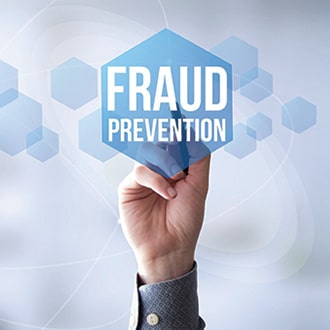Decoding Retail Strategies: How Stores Influence Increased Spending

The holiday shopping season has arrived, and with it an enticing array of discounts, sales, and specials. Everybody loves a good deal, but how can you be sure you’re getting the most bang for your buck? And how can you ensure you’re not falling victim to some retail mind control? We’ve rounded up some of the most common strategies that retailers use to bring in the big bucks at your expense.
Price Anchoring
Price anchoring is a psychological strategy that involves comparing two similar items, one at a high price and one at a lower price. The higher-priced option is used as an anchor to make the lower-priced product seem more attractive. You see this a lot in infomercials: “This product is normally $250, but if you order in the next 30 minutes, it’s yours for $50!” Avoid price anchoring by shopping around, comparing product prices and reading reviews.
Price Cushioning
Let’s say you’re shopping for sneakers, and you see one pair for $50, and another for $20. Most shoppers will opt for the more expensive pair, as they perceive them as being of higher quality. But if you throw a third pair of shoes into the mix at $35, suddenly that option seems much more appealing! It all comes down to how the options were presented to them. Avoid falling for price cushioning by figuring out exactly what you want and saving for it.
Buy One, Get One
BOGO offers seem like a great deal—after all, you’re getting something for a much lower price, if not for free! But really, they’re just a trick of the trade to get consumers to buy two things, when they really only need one. Stores use this strategy to spend more money than you originally planned.
Coupons
Coupons can be tricky. Many times, store-brand items are cheaper than name-brand products—even with a coupon for the name-brand item. Other times, coupons come with a long list of restrictions. Or, what may seem like a great incentive (earn a $10 coupon for a certain amount spent) is just a tactic to get you to spend more at a later date.
Eye-Level Options
Why does it always seem like the best products are right at eye level? Because they are. Stores carefully position items so that the most enticing are at eye level, exactly where you’ll see them. Lower-priced and sale items are positioned below eye level or at the back of the store and are generally more difficult to find. Try to avoid “shiny object syndrome” and hunt for the good deals.
Sensory Appeal
Things like music to listen to, perfumes to smell, food samples to taste, etc. all enhance the senses and create a sense of urgency and desire. This sensory appeal helps people connect with individual products and encourages them to spend more.
Store Layouts
Have you ever noticed that when you walk into a store, there aren’t displays until you get about five steps in? That’s because, psychologically, when people walk into a store, they’re trying to orient themselves. They don’t notice products right by the door because their focus is on where to go next. People also tend to move to the right first, which has caused many stores to create strategic layouts and navigational blockers that encourage shoppers to spend more. (Grocery stores and a certain Swedish home goods retailer have this down to a science!) Finally, people often perceive products placed on endcaps to be better deals, but that’s not always the truth. More often, they’re name-brand impulse buys.
Vanity Sizing
Anyone who has gone clothes shopping recently understands that sizing is drastically different from one store to another. You may fit into size 8 jeans at one store, and size 12 at another. This is called vanity sizing. Stores give customers a little ego boost by monkeying around with their sizes so that people keep coming back. There’s no easy way to avoid vanity sizing; instead, try on a variety of sizes at each store and buy what fits. The number is arbitrary!
Point-of-Purchase Displays
Point-of-purchase products are typically displayed throughout the line as you wait for your turn to check out. They’re those bright, shiny objects that you don’t need, but just can’t resist when you see them. Most stores have these, whether they’re last-minute snacks, new nail polish colors, seasonal items, etc.
Credit Card Offers
Many stores offer an immediate discount if you apply for their credit card. But what they don’t mention is the high interest rates that will negate your immediate savings, and how easy it is to rack up a balance. And don’t think that you can get off scot-free by applying for the card and canceling it later. That can actually do long-term damage to your credit score.
Free Shipping
How many times have you gone to check out while online shopping, only to find out that if you spend just $2 more, you’ll qualify for free shipping? Except that you can’t find anything on the site that costs less than $10, which is more than the cost of shipping. Now, you could purchase those extra items and return them later, but is it worth it? And will you remember to do so? The retailer is willing to bet you won’t.
Limited Time Only
A sense of urgency and exclusivity encourages consumers to make impulse purchases while they can. After all, what if that cute sweater sells out? Another tactic online retailers use is a “1 item left” tag. This threat encourages you to purchase the item before someone gets to it before you. But in reality, there’s no way to know for sure that it’s the only one left.
The age-old phrase is true: If something seems too good to be true, it probably is. Do your research, compare products and understand that some of these “deals” might just be a retailer trying to take you for a ride.
For more financial tips and tricks to save your hard-earned money, check out the WaterStone Bank blog.

